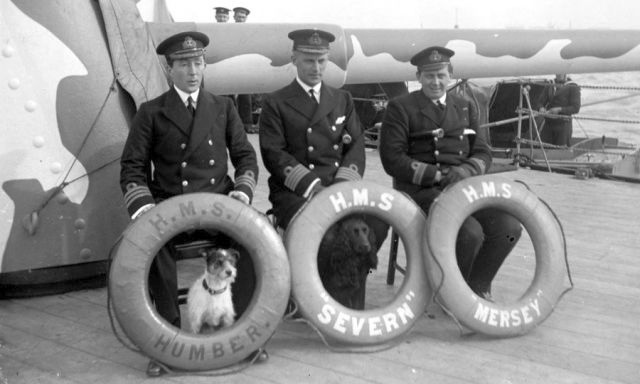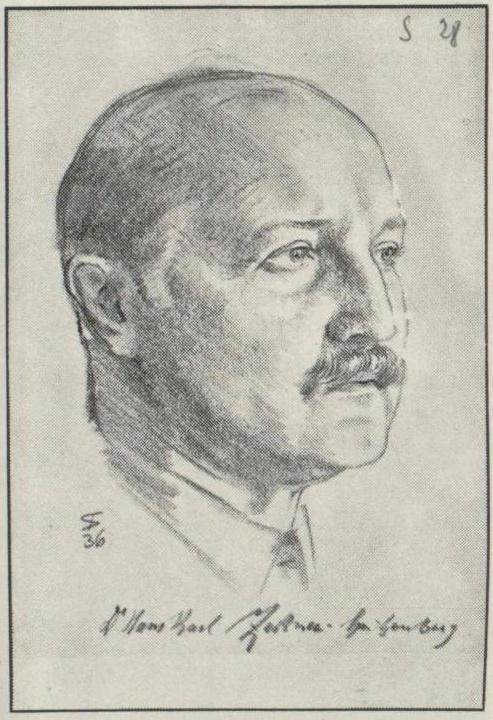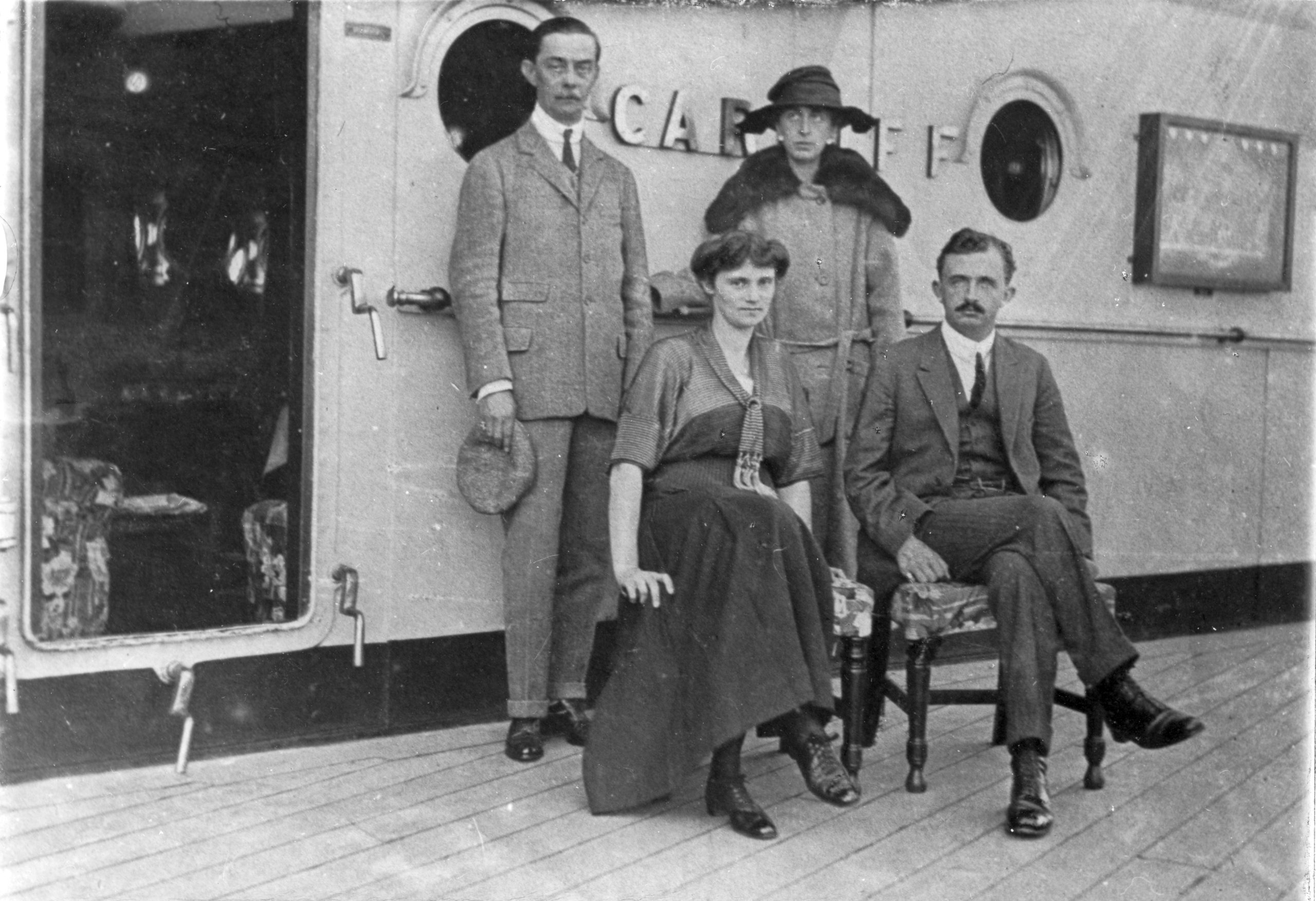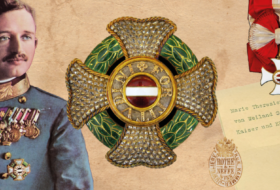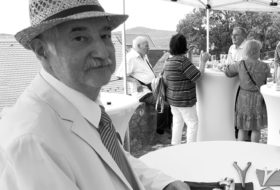The document is intriguing from two aspects: the accompanying letter gives an insight into the activities of the Prayer League (Gebetsliga für Kaiser Karl), an organisation advocating the beatification of Charles I (Charles IV as King of Hungary),[1] as well as an account of the former monarch’s journey to Madeira, which reveals Emperor Charles’ worldview and personal demeanour.
The future monarch’s father, Archduke Otto[2], was appointed as commander of the Sopron Hussar regiment in 1894. When the family moved to Sopron, Charles began his studies there. His receptiveness and openness to the Catholic faith were already evident at this time. Mater Vincencia,[3] the former headmistress of the Ursuline Education Institute for Girls of Sopron, foretold that he would one day become emperor and would need to endure a great amount of suffering. Based on the prophecy that later came true, the prayer group founded in 1895 on the initiative of Mater Vincencia initially prayed for the coronation of Archduke Charles as emperor,[4] which seemed unlikely at the end of the 19th century because of the powerful position of the then heir to the throne, Franz Ferdinand. However, the wish became a reality in 1914, with the assassination of the heir to the throne, and after the death of Franz Joseph, he succeeded him as emperor. Charles’s reign lasted barely two years, and in 1923, a year after his early death, in 1923, Wilhelm Miklas[5], an Austrian Christian Socialist member of the National Assembly and State Secretary, raised the idea of Charles’ beatification in a letter to Friedrich Gustav Piffl[6], the Cardinal-Archbishop of Vienna. In 1925, the Prayer League, which had grown in numbers, became accepted in ecclesiastical circles, and from that year onwards, the Archdiocese of Vienna preserved the evidence and testimonies necessary for beatification.
During these years, the Prayer League was led by Baron Dr Hans Karl Zessner-Spitzenberg[7] and Sister Emmy Gehrig[8], who had been collecting data and proof concerning Emperor Charles for decades.
Baron Hans Karl Zessner-Spitzenberg
(Photo: ÖNB / Vienna)
On 18 March 1938, after the invasion of Austria by Nazi Germany, Baron Zessner was arrested, and on 1 August 1938, he died in the Dachau concentration camp. Emmy Gehrig was also captured, and the secretary of the prayer group, Alphonsa von Klinkowström, destroyed the archives out of fear of the Gestapo. After the war, in 1947, the prayer groups in Austria, Germany and other countries were re-established,[9] and under Emmy Gehrig’s leadership, the collecting efforts have continued.[10] As part of this work, Arthur Snagge,[11] a Royal Navy rear admiral, was asked to write his memoirs.
A milestone in the case was in 1949 when the first stage of the beatification process was launched in the Archdiocese of Vienna, and on 3 November 1949, Vatican Radio announced the beginning of the beatification procedure for Emperor and King Charles of Austria, namely the Holy See’s acceptance of the preliminary investigation of the beatification of Charles of Austria. The postulator of the case,[12] Gyula Magyary,[13] reported at the end of 1952 that the seven archdiocesan procedures (information phase) on which the Roman Apostolic process was based had been initiated. The status of the proceedings was reported in the Prayer League Yearbooks.
The composition of the presidency of the Prayer League and the participants in the beatification process changed many times. Emmy Gehrig was Executive President from 1956 until her death on 3 November 1974.
Although not closely related to our source publication, the conclusion of the beatification process is also worth mentioning. The ‘Decree on the Heroic Virtues of the Servant of God’ was issued by the Vatican on 12 April 2003, and the recognition of the miracle presented during the process was signed by Pope John Paul II on 20 December 2003. This has marked the provisional closure of the beatification process. The official publication of the admission of the Servant of God from the Australian House to the beatification of the Catholic Church was followed by the beatification, which took place on the date set by the Pope, 3 October 2004, in a solemn ceremony in St Peter’s Square.
Captain Arthur Snagge
(Photo: National Portrait Gallery)
The Prayer League has contacted thousands of individuals, both verbally and in writing, to help obtain testimonies for the beatification process. As part of this work, Vice-Admiral Arthur Snagge was asked to report to the Prayer League on his recollections of Charles IV.
In 1921, Snagge, as captain and Entente agent, accompanied Charles IV, his wife Zita, and members of their entourage from Baja to the Iron Gates on the warship Glowworm[14] and from there by car and train to the Black Sea port of Sulina.
The letter is believed to have been originally written in English, as the German text is not very precise, so the translation has been done with the Hungarian language in mind. It is clear from this courteous and respectful letter that Charles IV was highly disciplined in his acceptance of being ordered out of the country and that he sought to abide by the terms demanded by the Entente during the few days he was on board the ship.
The Prayer League made a great effort to inform Otto von Habsburg of the process of beatification that had begun. As a result, a copy of the note, together with the original covering letter from Sister Emmy Gehrig, was included in the heir to the throne’s estate. Snagge’s relatively brief letter accurately reflects the Admiral’s opinion of Charles’s human integrity and discipline. In this regard, he precisely quotes the text of the declaration he had forced Charles IV to make at Baja, in which he promised not to commit any insubordination during the journey, i.e., not attempting to escape.[15] Later, when the exiles were already travelling to Orsová in a private car accompanied by the Romanian authorities, he kept his promise to the British officer.
HMS Glowworm, anchored at Baja
The preceding history of the journey is well known: after his unsuccessful attempt to return from exile in Switzerland, Charles IV was transported by train on 24 October 1921, first to Tata, then to the Benedictine Abbey of Tihany on 26 October, where after several days of waiting it became clear that the couple would have to leave the country. Moreover, they were not allowed to return to Switzerland, where they had initially been assigned, with the victorious powers seeking a more distant destination, from which any further comeback would be impossible.
The majority of the politicians accompanying them were detained; apart from the butler and the head maid, only Ágnes Aladár Boroviczényné Schönborn, the Queen’s lady-in-waiting, was allowed to follow them as far as the Black Sea (Sulina) crossing.[16] They arrived in Baja on the morning of 1 November and took their places on the battleship Glowworm. On 4 November, they approached the Iron Gates at Moldova Veche[17] but were unable to continue their journey due to low water levels. A long delay ensued. Captain Snagge, considering that the safety of the exiled monarch was the responsibility of the British government, intended to cross the strait by motorboat and then proceed by an awaiting British ship to avoid Romanian territory.[18] The Romanians, represented by Major Kirculescu of the Romanian army, on the other hand, wanted to make the journey by car to Orsová and by train from there, and the latter approach eventually prevailed. As Kirculescu writes: “This negotiation lasted nearly an hour. At the end of the discussions, he showed me a letter in French from the former Emperor and King, in which he gave me his word of honour that during the time he was in the custody of Commander Snagge, he would not attempt to regain his freedom.” Snagge arranged for his sailors to escort the exiles, a French naval officer and Kirculescu still accompanying them. Interestingly, although the Romanian authorities urged the car solution, the stretch of road to Orsova on 5 November was what they feared most, lest the ”Carlists” cause too much disruption. Kirculescu’s report mentioned above states, “At 12.50 p.m., we arrived in Orsova. This was the most dangerous point of our whole itinerary. Although I did my utmost to maintain the strictest secrecy, nevertheless, thanks to the procedures of our police, whose main activity was to incite the population, a huge crowd of people gathered in the streets, from the centre of which handkerchiefs were waved in greeting from here and there. At last, we reached the railway station at Orsova: now we could breathe a sigh of relief.”[19]
They boarded the train and arrived the following morning at Galac[20], from where they continued their journey by the steamship Principesse Maria[21] to embark on board the battleship Cardiff, which was waiting at Sulina[22].
From Galac, Count Joseph Hunyady and his wife, Countess Gabriella Bellegarde[23], escorted the imperial party, and Captain Snagge bade farewell to the Emperor at Sulina.
The royal couple stepped on the deck of the Cardiff on 6 November and arrived on the 19th at Madeira, an island in the Atlantic Ocean off the Portuguese coast.
Charles IV and Queen Zita and Count József Hunyady
and his wife Countess Gabriella Bellegarde on board the Cardiff (1921)
(Photo: Otto von Habsburg Foundation)
The documents published here are part of the miscellaneous papers in the collection of the Otto von Habsburg Foundation’s Archives, which are currently being processed.
Piroska Kocsis
Zoltán Ólmosi
Sources
[1] See on this Habacher, Maria: King Charles Prayer League for the Peace of Nations. https://www.magyarkurir.hu/uploads/content/55790/fajlok/imaliga–maria-habacher.pdf
[2] Otto of Habsburg-Lorraine (contemporary nickname: ‘handsome Archduke Otto’) (1865-1906), second son of Archduke Louis Charles (younger brother of Emperor and King Franz Joseph I), younger brother of Crown Prince Franz Ferdinand, father of Emperor and King Charles.
[3] Known secularly as Alojzia Fauland (1852-1902), she entered the Sopron monastery in 1881.
[4] This Hungarian prayer group became the origin of the King Charles Prayer League, which later initiated and financed the canonization process, and is officially known as the Charles Emperor (in Hungary as King Charles) Prayer League for the Peace of Nations.
[5] Wilhelm Miklas (1872-1956), Austrian politician and third President of the First Austrian Republic from 1928 to 1938.
[6] Friedrich Gustav Piffl (1864-1932), Archbishop of Vienna from 1913 until his death, Cardinal from 1914. After the collapse of the Monarchy, he resigned from the title of Prince-Archbishop.
[7] Hans Karl Zessner-Spitzenberg, Baron (1885-1938), Austrian jurist. He joined the monarchist group around Prince Johannes Liechtenstein as a member of the Legitimist Party. In 1923, he initiated an expert opinion to monitor compliance with Habsburg law. Head of the beatification proceedings of Emperor Charles I.
[8] Emilie “Emmy” Gehrig (1893-1974), Austrian civil servant and writer. Member of the Executive Committee of the Prayer League from 1947, Executive President from 1956 to 1974. She has written extensively on religious subjects.
[9] According to Emmy Gehrig, prayer groups numbered some 25,000 members worldwide.
[10] The collected testimonies have been kept in the monastery in Lilienfeld since 1947 and in St. Pölten since the autumn of 1994.
[11] Admiral Arthur Lionel Snagge (1878-1955), officer of the Royal Navy. On 19 March 1900, he was commissioned on the ship Redbreast. Lieutenant on 31 December 1900, Commander on 30 June 1913. Commanded the Humber monitor in 1914, serving on it for most of the First World War in Europe and the Mediterranean. British Naval Attaché in Washington in May 1918, Captain on 30 June 1919, transferred to the Naval Intelligence Department in November that year. In the 1920s, he commanded various ships; from November 1929 to July 1931, he was in command of the Royal Naval Barracks at Chatham Dockyard, after which he was on staff at the Admiralty. He retired in 1936 with the rank of Second Lieutenant.
[12] A postulator (applicant) is an officer appointed by the competent ecclesiastical magistrate to the beatification and canonisation procedures. His/her task is to gather information about the candidate’s life and formulate the reasons for requesting beatification or canonisation.
[13] Gyula Magyary (1901-1988), Roman Catholic priest, ecclesiastical lawyer, university professor, and member of the Order of Malta, who was also the official representative of the House of Habsburg, including Otto von Habsburg, at the Vatican.
[14] A coastal destroyer was launched on 12 December 1906 and sold to a private owner in May 1921.
[15] The bond, originally written in French by Kaiser Karl. Persönliche Aufzeichnungen, Zeugnisse und Dokumente. Hrsg. von Erich Feigl. München–Wien, Amalthea, 1987, 420–421. ((hereafter Feigl, E (1987)).
[16] Count Sándor Esterházy, the queen’s High Seneschal, joined the queen at Baja.
[17] Meaning [Romanian]: Ómoldova. It is a settlement in Romania, in the county of Krassó-Szörény, on the left bank of the Danube.
[18] Aladár Boroviczény: A király és kormányzója. Budapest, Europa, 1993, 488., for the recollection of Ágnes Schönborn see 435-456.
[19] Notes of the Romanian Major Kirculescu on the journey of the captive royal couple. Magyarság, 25 March 1922, 5-6.
[20] A port town in the southeast of Romania along the Danube.
[21] Romanian steamship.
[22] Port town in Tulcea county, Romania.
[23] Countess Gabriella Bellegarde (1890-1945), imperial and royal courtier, second wife of Count József Hunyady (1873-1942).
